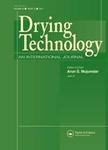版权所有:内蒙古大学图书馆 技术提供:维普资讯• 智图
内蒙古自治区呼和浩特市赛罕区大学西街235号 邮编: 010021

作者机构:Hebei Univ Econ & Business Coll Biosci & Engn Shijiazhuang Hebei Peoples R China Univ Calif Los Angeles Dept Biol & Agr Engn Los Angeles CA USA Queensland Univ Technol Sci & Engn Fac Brisbane Qld Australia Shandong Acad Agr Machinery Sci Jinan Peoples R China Beijing Technol & Business Univ Coll Artificial Intelligence Beijing Peoples R China China Agr Univ Coll Engn POB 19417 Qinghua Donglu Beijing 100083 Peoples R China
出 版 物:《DRYING TECHNOLOGY》 (干燥技术)
年 卷 期:2023年第41卷第3期
页 面:460-476页
核心收录:
学科分类:0817[工学-化学工程与技术] 08[工学] 0802[工学-机械工程]
基 金:National Natural Science Foundation of China Natural Science Foundation of Hebei Province [C2020207004] Scientific Research, and Development Program of Hebei University of Economics and Business [2022SGYB04]
主 题:Papaya slice step-down RH hot air drying heat and mass transfer 3D simulation
摘 要:Convective hot air drying technology is widely used for fruits and vegetables drying process due to its simplicity in usage, small investment, and convenience in operation. However, it is generally considered energy-intensive process with lower drying efficiency and quality because of unprecise control of drying process. In order to solve these problems, step-down relative humidity (RH) hot air drying technology was applied for papaya drying to improve drying efficiency and quality and reduce energy consumption. The effect of constant RH (20%, 30%, 40%, and 50%) and step-down RH of 50% with different holding times (10, 30, 60, and 90 min) and then decrease to 20% on heat and mass transfer process, drying quality, and energy consumption was examined. Results showed that decreasing RH contributed to improvement in the drying rate (DR). Compared to constant RH of 20%, the drying time under initial RH of 50% for 30 min followed by 20% RH shortened by 21.4%. Additionally, under this RH control strategy, the rehydration ratio (RR) and energy consumption achieved their maximum (7.71 +/- 0.06) and minimum value (0.015 +/- 0.001 kJ/g), respectively. During initial drying stage, high RH improved convective heat transfer coefficient (h(t)) values and material temperature increased quickly. Furthermore, high RH contributed to maintaining pore structure formation, which benefited moisture diffusion. When RH was reduced, low RH enhanced convective mass transfer coefficient (h(m)) significantly, resulting in rapid diffusion of internal moisture at high temperature, as well as rapid moisture evaporation from the surface. Therefore, step-down RH hot air drying was verified to improve drying of papaya slices, making it energy efficient process. The findings in current work indicate step-down relative humidity strategy is a promising technique to enhance hot air drying process, quality, and energy efficiency of papaya slices.